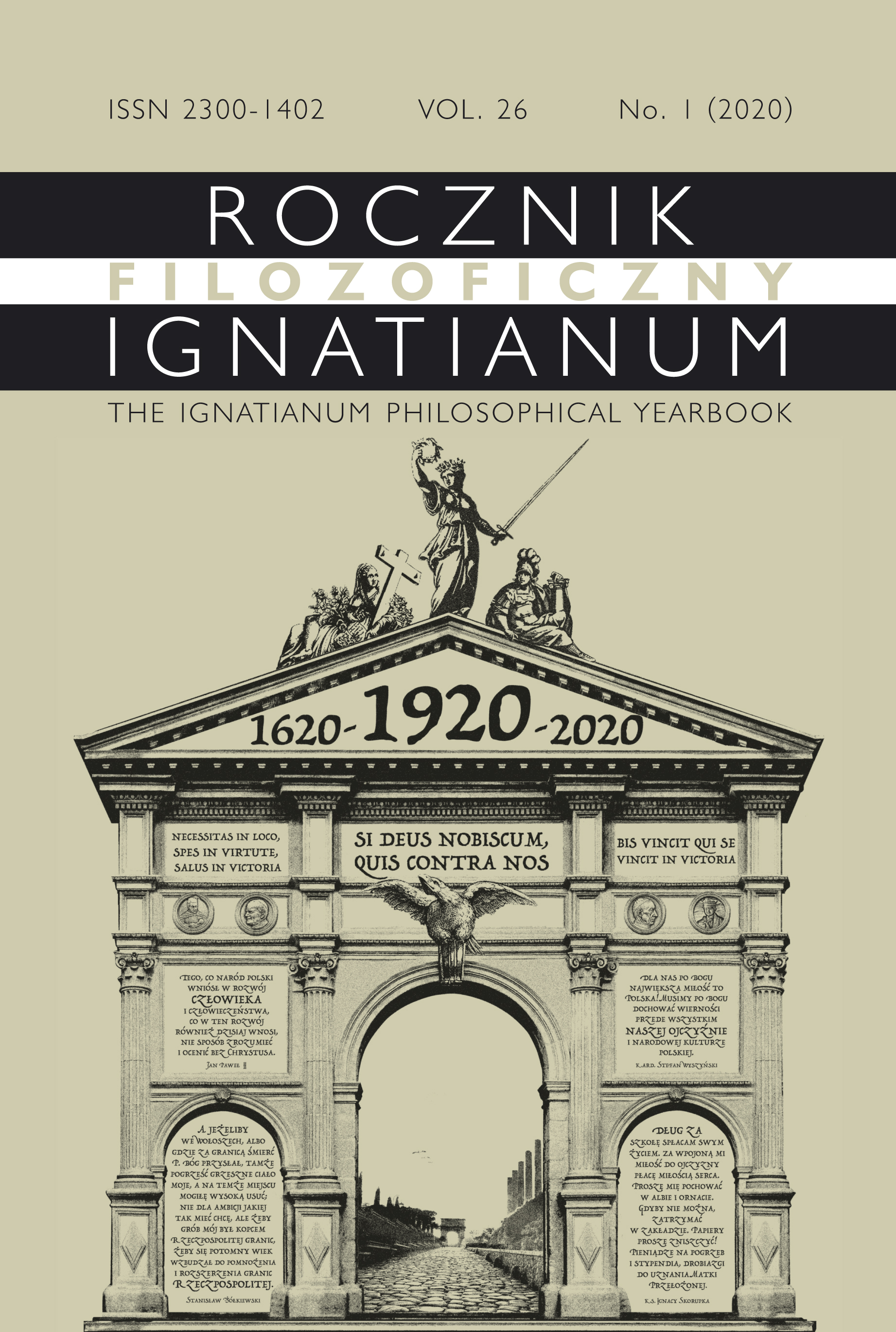Józef Czapski’s Art – the Circular Growth
Abstract
This article is devoted to the work of Józef Czapski, a Polish painter, writer, epistolographer and diarist who died in Maisons-Laffitte in 1993. The artist was also engaged in the matters of human life and politics. The article deals solely with his paintings. After a short presentation of Czapski’s artistic biography, a more in depth analysis of his works is provided. The article uses the artist’s letters and memoirs on top of the basic literature. The analysis shows that the Czapski’s artistic work constitutes a closed whole; no new work, neither drawing nor painting will be added to his legacy, but, at the same time it is open because the threads of Czapski’s art remain unclosed. Czapski’s works constitute a logical whole in the sense that one can draw a circle around which they are arranged, except that the beginning of the journey does not coincide with the end. Czapski abandoned his first, rather inept expressionist works to take up in the broad sense a challenge of Post-Impressionism. However, not satisfied with the vision of Post-Impressionism and the painting focused on pure color delectations, he returned to his initial interest in de l’horreur de la vie, absorbing the lessons and experiences that his life gave him, digesting and consequently abandoning Post-Impressionism. To him, color is understood not as Impressionism understood it, but rather, as it was treated by Expressionism, howewer, he tempered it according to the school of Post-Impressionism and the French art. Czapski’s painting completes the full circle: his journey begins with “the scary head”, experiences post-impressionism, and blossoms with paintings depicting l’horreur de la vie and anxiety hidden in the stark colors of his late landscapes. The author describes Józef Czapski’s art as the great one , what is ultimately determined by the whole output, which, like a keystone brings together all the themes: of the painter, of the writer and of the man devoted to public affairs.
References
„List Józefa Czapskiego do Zygmunta Mycielskiego z dnia 25.11.85”, Kamerton 57 (2013), 55.
„List Józefa Czapskiego do Zygmunta Mycielskiego z dnia 16.12.85”, Kamerton 57 (2013), 60.
„List Józefa Czapskiego do Zygmunta Mycielskiego, 8.04.86”, Kamerton 57 (2013), 64.
„List Józefa Czapskiego do Zygmunta Mycielskiego z dnia 17.09.86”, Kamerton 57 (2013), 74.
Listy Rainera Marii Rilkego do Klary Rilke-Westhoff, list z 12 X 1907, przeł. i oprac. Tomasz Ososiński (Gdańsk: słowo/obraz terytoria, 2016).
Albers Josef, Interaction of Color (New Haven and London: Yale University Press, 1963).
Cybis Jan, Notatki malarskie, Dzienniki 1956–1966, zapis z roku 1961, bliższej daty brak (Warszawa: PIW, 1980).
Journal des avant-gardes: les années vingt, les années trente. Texte de Jean-Luc Daval (Genève: Editions d’Art Albert Skira, 1980).
Czapski Józef, Oko (Paryż: Instytut Literacki, 1960).
Czapski Józef, Wspomnienia starobielskie (Warszawa: Niezależna Oficyna Wydawnicza, 1979).
Czapski Józef, Patrząc (Kraków: Znak, 1983).
Czapski Józef, „Pamiętając”, Zeszyty literackie 44/4 (1993).
Czapski Józef, Wyrwane strony (Paris: Les Éditions Noir sur Blanc, 1993). Czapski Józef, Na nieludzkiej ziemi (Kraków: Znak, 2011).
Giżycki Marcin, Słownik kierunków, ruchów i kluczowych pojęć sztuki drugiej połowy XX wieku (Gdańsk: słowo/obraz terytoria, 2002).
Leymarie Jean, Monnier Geneviève, Rose Bernice, Histoire d’un Art. Le Dessin (Genève: Editions d’Art Skira SA, 1979).
Lalewicz Janusz, Przedstawianie i znaczenie. Próba analizy semiologicznej rysunku (Gdańsk: słowo/obraz terytoria, 1995).
Nowak Janusz S., przedmowa do: Nie liczy się realizm, czy antyrealizm. Liczy się prawda. Pawilon Józefa Czapskiego. Przewodnik, opracowanie Janusz Nowak, (Kraków: Muzeum Narodowe w Krakowie, 2016).
Władysław Stróżewski, O wielkości (Kraków: Znak, 2002).
Taranczewski Paweł, „Hanna Rudzka-Cybisowa o Krakowie i Paryżu”, Porta Aurea 4 (1998): 99–113.
Skoczek Elżbieta, „Max Beckmann: cham i rzeźnik”, http://wsztuce.com/max-beckmann-cham-i-rzeznik/ (dostęp: 4.06.2021).
Copyright (c) 2021 Akademia Ignatianum w Krakowie

This work is licensed under a Creative Commons Attribution 4.0 International License.
The Yearbook only accepts materials for publication that are free of all conflicts of interest, and that in no way involve conflicts over authorship, copyright, etc. The Editors will take action against any cases of plagiarizing, ghostwriting1, guest/honorary authorship2, etc. Where co-authored work is concerned, the Author listed first is expected to take responsibility for the submission, and is required to make clear the contributions of all of the Co-Authors involved. In the event of the publication owing its existence to funding dedicated to this purpose, this fact should be made clear: e.g. in any note of thanks/acknowledgement, or in a footnote, etc. Explicit notification should be given of any form of reprinting, with the appropriate evidence of permission to publish being furnished as required. Any impropriety on the part of Authors/Reviewers risks exposing them to appropriate responses from the relevant institutions.
______
1 This term refers to instances of a person who has made an essential contribution being omitted from the list of authors, or from notes conveying gratitude and/or acknowledgement.
2 This occurs when a person who has made either an insignificant contribution or no contribution at all nevertheless appears on the list of authors.





